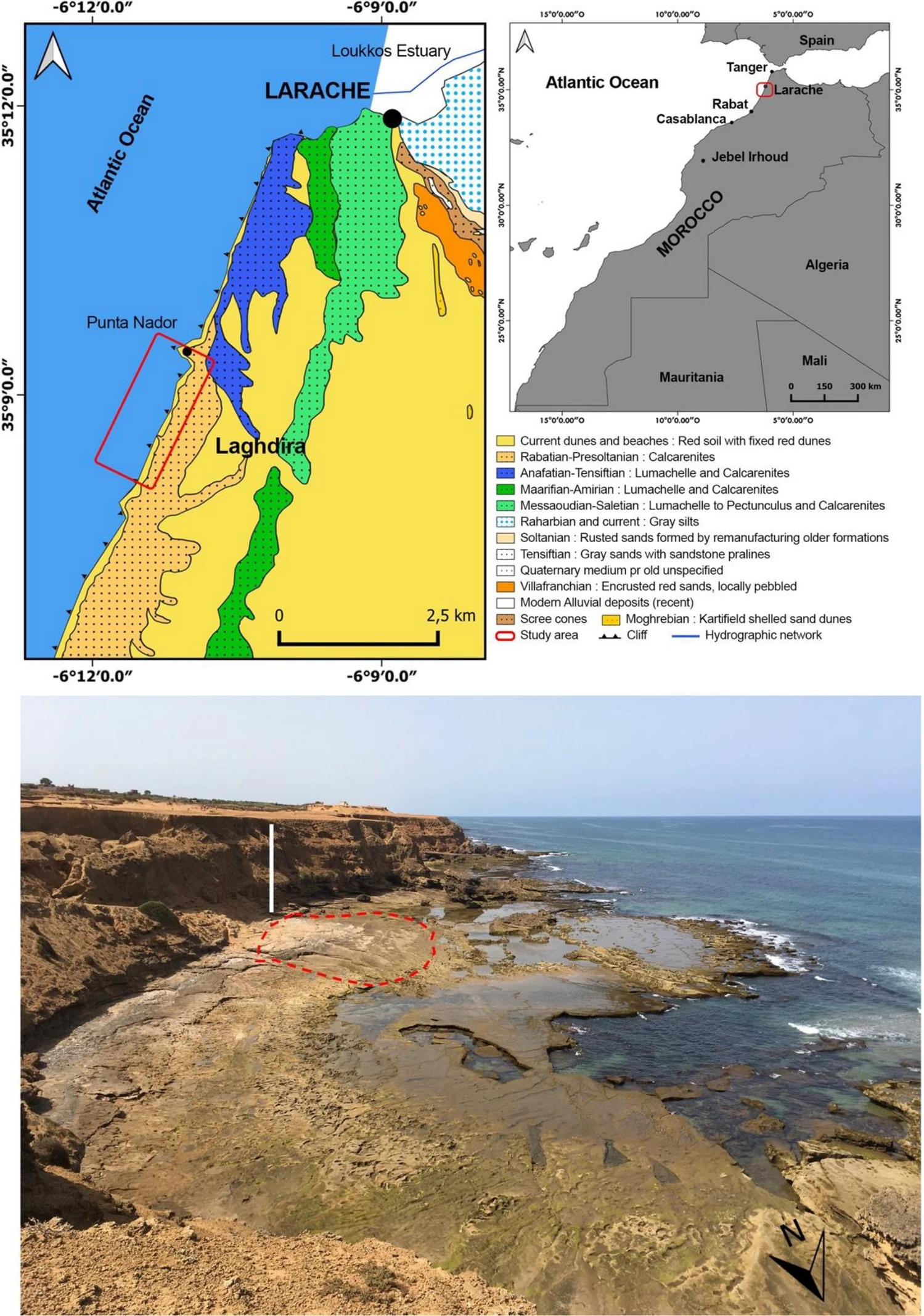The sun-baked sands of Larache, Morocco, have yielded a remarkable treasure: 85 human footprints, meticulously preserved from the late Pleistocene era, roughly 129,000 to 11,700 years ago.
These tracks, etched by Homo sapiens who once roamed the North African coast, are not mere imprints in the sand. They are a captivating window into the lives, movements, and even family dynamics of our ancient ancestors.
A recent study published in Nature, led by Dr. Mouncef Sedrati, a coastal geomorphologist and marine geologist, unravels the story these footprints tell. They reveal a scene of multigenerational Homo sapiens navigating a sandy beach, leaving behind impressions that whisper of their daily routines.
footprints of children, adolescents, and adults
Analysis of the footprint sizes and spacing suggests the presence of children, adolescents, and adults, hinting at family groups traversing the coastal sands together.

But what truly sets these footprints apart is their exceptional preservation. A fortuitous blend of factors—fair-weather waves, specific tidal zones, and the beach's unique topography—ensured these ancient impressions remained remarkably crisp. This makes the Larache site not only one of the largest late Pleistocene footprint sites globally but also the only documented one in North Africa and the Southern Mediterranean.
The significance of this discovery extends far beyond its mere age and size. It offers compelling evidence of early Homo sapiens' adeptness in coastal environments. These ancient footprints suggest a familiarity with tidal patterns, an understanding of safe passage across different beach zones, and possibly even the utilization of coastal resources. This paints a fascinating picture of early humans not just as land dwellers but as adaptable pioneers venturing into the realm of the sea.
Furthermore, the Larache footprints add to Morocco's already rich tapestry of early human history. The country boasts the oldest known Homo sapiens remains, unearthed at Jebel Irhoud, and some of the oldest and richest African Middle Stone Age hominin sites. These discoveries, along with the Larache footprints, solidify Morocco's position as a crucial piece in the puzzle of human evolution, particularly in the North African and Southern Mediterranean regions.
As researchers continue to study the Larache footprints, the whispers of the past grow louder. Each carefully measured stride, each preserved toe mark, offers a tangible connection to our distant ancestors.





 chargement...
chargement...













